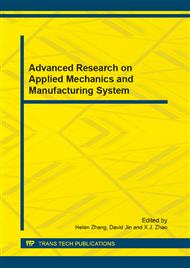p.51
p.56
p.60
p.64
p.69
p.73
p.77
p.81
p.85
Research on Design Values of Fragility with Mechanics Properties
Abstract:
In this paper, on the basis of discussing the basic concept of design value of frailty, experiment data were analyzed by way of distribution fitting, and -3δ basis, A basis and B basis of fragility with mechanics properties were also calculated by means of normal distribution and logarithmic normal distribution so that reliability design concerned with Mechanics Properties can be performed conveniently.
Info:
Periodical:
Pages:
69-72
Citation:
Online since:
December 2012
Authors:
Price:
Сopyright:
© 2013 Trans Tech Publications Ltd. All Rights Reserved
Share:
Citation:


